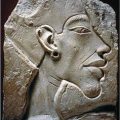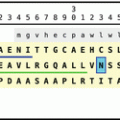and Winfried G. Rossmanith2
(1)
Lenzkirch, Germany
(2)
Ettlingen, Germany
The hormones derived from amino acids include catecholamines , serotonin , melatonin , and the thyroid hormones thyroxine and triiodothyronine .
7.1 Catecholamines
Four hormones are derived from the amino acid tyrosine (Fig. 7.1, 73): L-3,4-dihydroxyphenylalanine (L-DOPA ; Fig. 7.1, 74), dopamine (Fig. 7.1, 75), noradrenaline (Fig. 7.1, 76), and the hormone of the adrenal medulla, adrenaline (Fig. 7.1, 77); noradrenaline is also released from adrenal medulla cells (Table 7.1). Since the adrenal medulla is derived from neuroectoderm, there are many parallels to noradrenergic neurons.


Fig. 7.1
Catecholamine biosynthesis
Table 7.1
Cells secreting catecholamines
Catecholamine | Site of synthesis |
|---|---|
DOPA  dopamine dopamine | Dopaminergic neurons |
DOPA  dopamine dopamine  noradrenaline noradrenaline | Noradrenergic neurons |
DOPA  dopamine dopamine  noradrenaline noradrenaline  adrenaline adrenaline | Chromaffin adrenal cells |
In American English, the names epinephrine and norepinephrine are commonly used, whereas in British English, the corresponding names are adrenaline and noradrenaline: “epinephrine” is derived from Greek (epi-nephros) and “adrenaline” is derived from Latin (ad-renalis), but both mean “close to the kidney.” In this book, we use the names “adrenaline” and ‘noradrenaline” as these are better known internationally.
The first two reactions from tyrosine to adrenaline occur in the cytosol . The key enzyme is tyrosine hydroxylase (Fig. 7.1). Its activity determines the amount of noradrenaline and adrenaline produced. Dopamine is active within vesicles. The next enzyme, dopamine β-hydroxylase , is active only inside vesicles. It is expressed in noradrenergic neurons and in the adrenal medulla . The last enzyme of catecholamine biosynthesis, phenylethanolamine N-methyltransferase , is the characteristic enzyme of chromaffin cells of the adrenal medulla and is stimulated by adrenocorticotropic hormone. Phenylethanolamine N-methyltransferase is located in the cytosol; noradrenaline, for it to be converted into adrenaline, has to be transported out of vesicles. Transport into vesicles is performed by vesicular monoamine transporter s 1 and 2, which exchange monoamines for hydrogen and maintain a proton gradient across the vesicular membrane (Henry et al. 1994; Erickson et al. 1996; Cartier et al. 2010). How the export of noradrenaline from vesicles is performed is not clear.
Owing to differential expression of the catecholamine-generating hormones, there are some neurons that secrete dopamine (these do not express dopamine β-hydroxylase ), many neurons that secrete noradrenaline , and in only in the adrenal medulla cells neurons capable of secreting adrenaline and to a lesser degree noradrenaline . These latter chromaffin cells are of neuroectodermal origin, in contrast to the adrenal cortical cells, which have a mesodermal origin.
The take-home lesson is that noradrenaline :
1.
Is a neurotransmitter acting directly from noradrenergic neurons on target cells such as muscle cells via synapses.
2.
Is also a hormone from the adrenal medulla acting in an endocrine manner on cells other than those in the adrenal medulla.
Adrenaline , however, is never a neurotransmitter, but is a hormone distributed via the circulation and acting on receptors on a variety of target cells—for example, nerve cells. Some recent findings point to adrenaline synthesis within the brain, but there have been no conclusive functional studies so far.
7.1.1 Dopamine
Dopamine is the hormone controlling prolactin release from lactotropic pituitary cells. These cells would, without stimulation, release prolactin if they were not inhibited by dopamine. Such dopamine stems from hypothalamic neurons releasing dopamine into the median eminence , from where it reaches the pituitary by the portal system of the pituitary stalk in order to inhibit prolactin release
Fact sheet 7.1: Dopamine
Structure:


75
Function:
An intermediate in adrenaline/noradrenaline biosynthesis, a neurotransmitter, and a hormone for the tonic suppression of pituitary prolactin release.
Receptor:




Five different dopamine receptors ; dopamine receptor D2 suppresses prolactin release in the pituitary.
Stay updated, free articles. Join our Telegram channel

Full access? Get Clinical Tree





